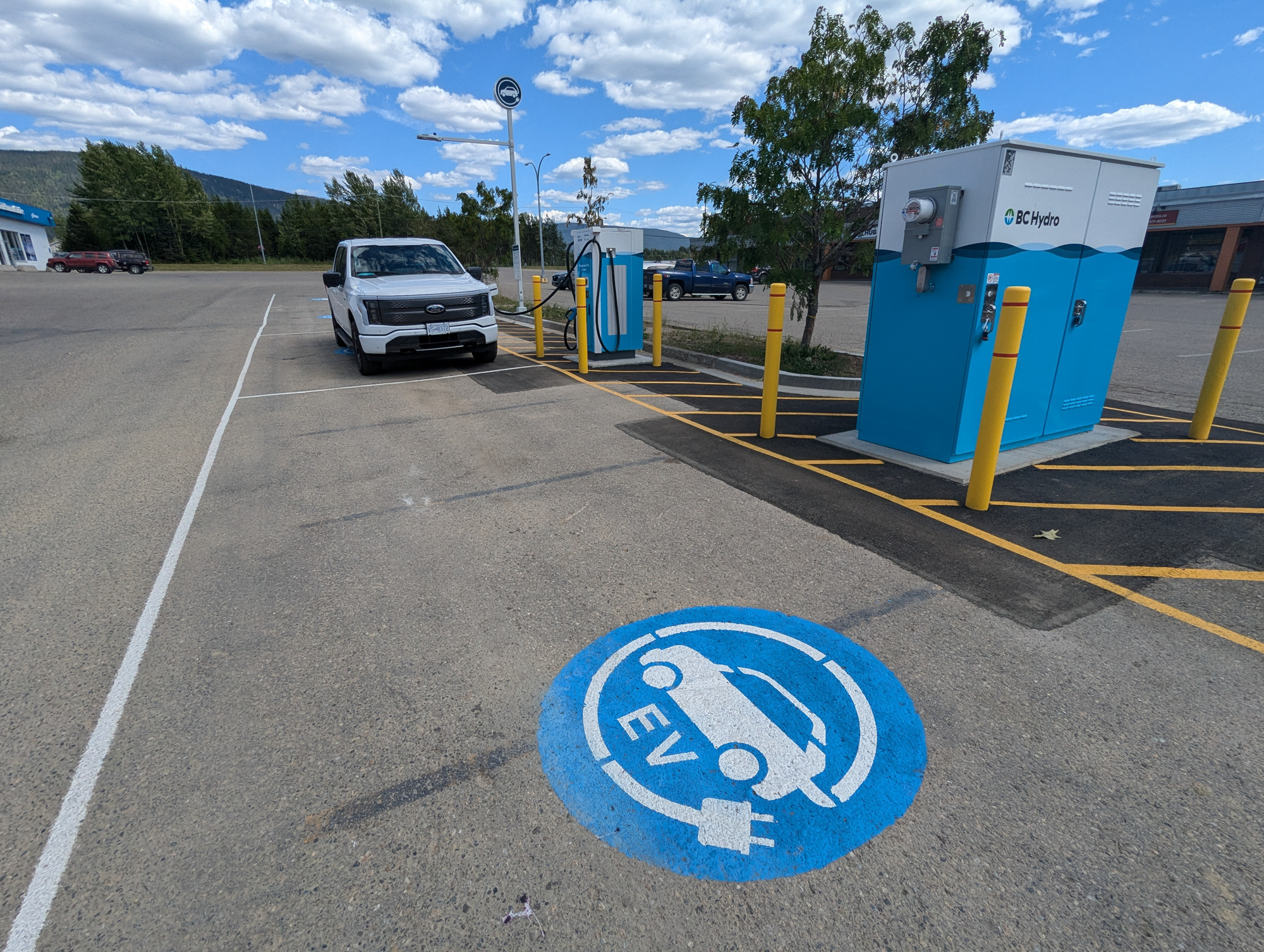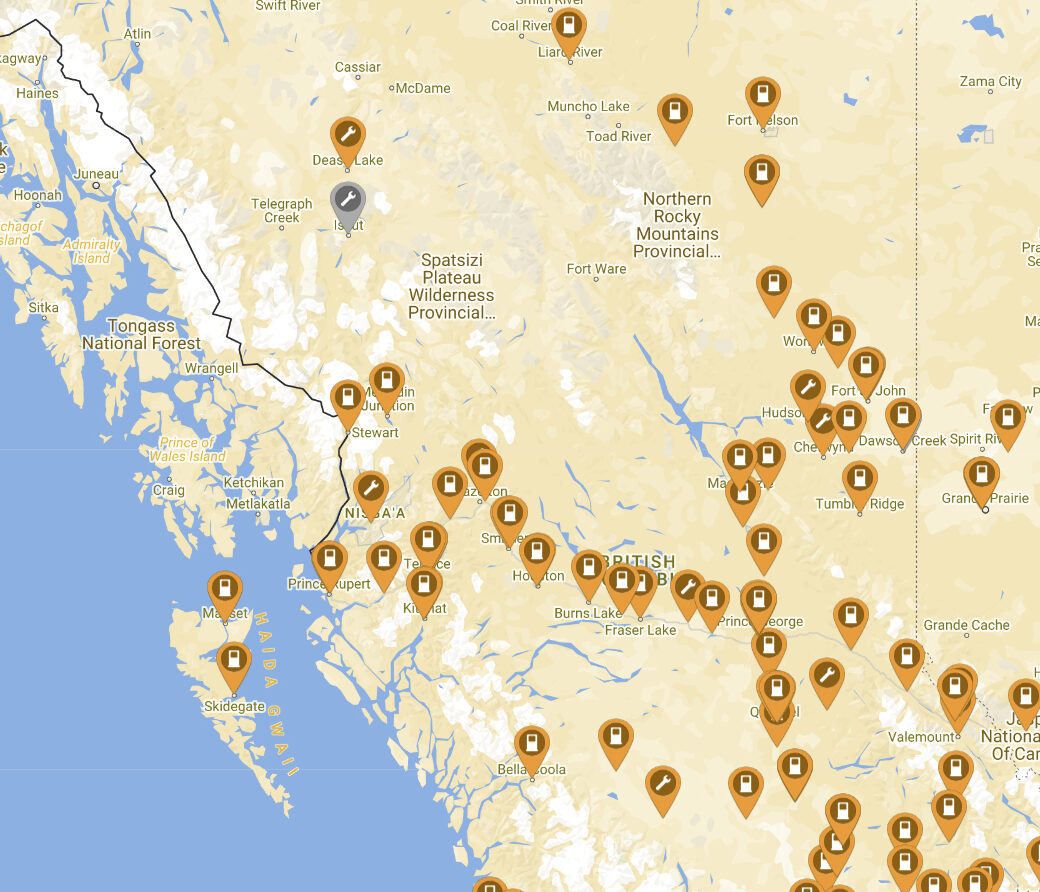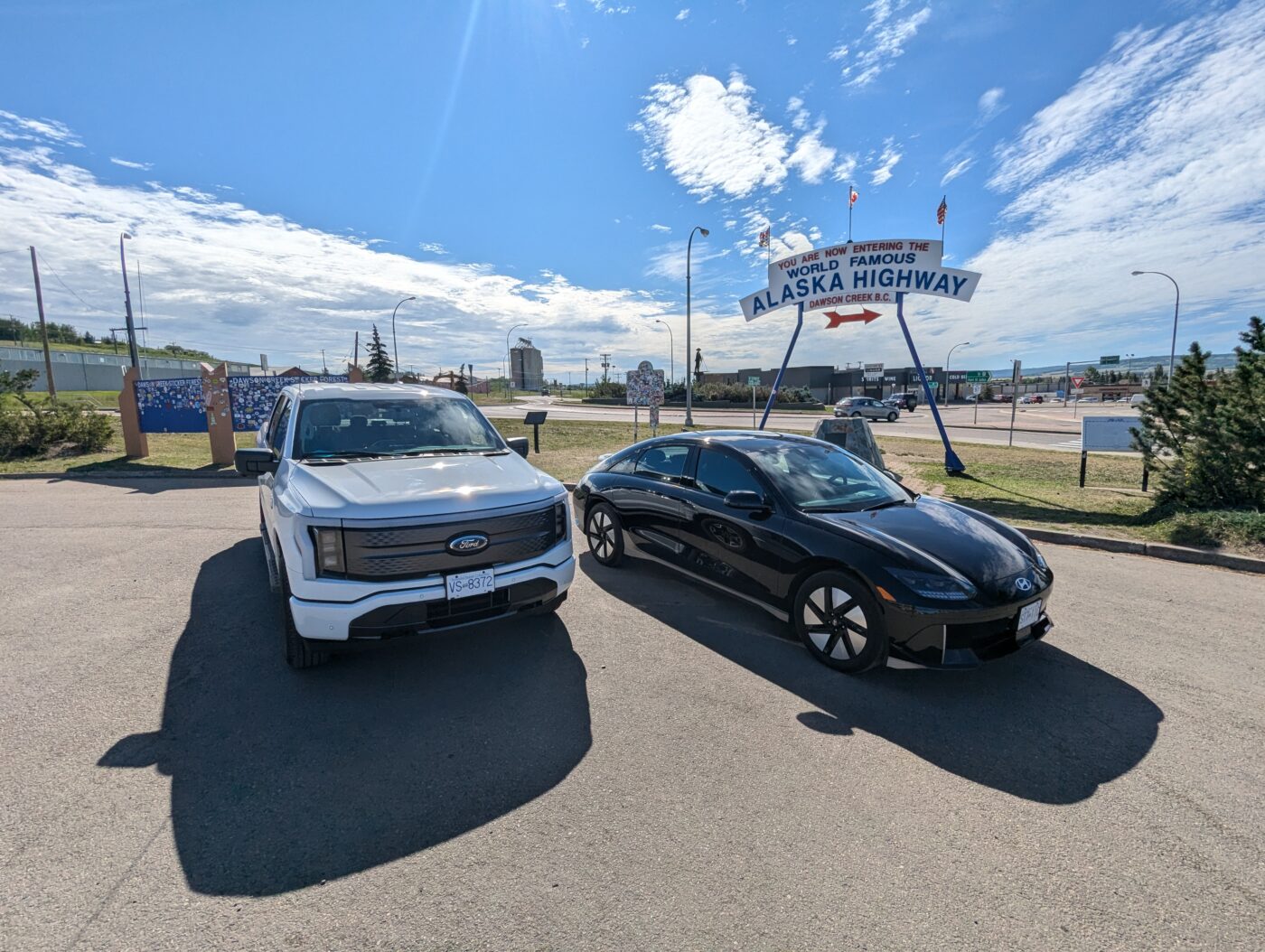B.C.’s “Electric Highway” nearly complete with more chargers and serious upgrades on the way.

September 6, 2024
The Province has announced that British Columbia’s “Electric Highway” will be completed by the end of the month. This marks a major milestone of fast-charging expansion that saw new charging stations opened in places like Masset on Haida Gwaii, Iskut on HWY 37, Liard Hot Springs on HWY 97 north, Bella Coola on the central coast, and Sooke on Vancouver Island. The networks includes 155 charging sites and more than 310 fast chargers, with some sites offering additional Level 2 chargers.
The completion of of these stations allows for seamless EV travel to the Yukon on both the Stewart-Cassiar (37) and Alaska (97) highways, from Bella Coola to the interior on HWY 20, and to places off of main routes like Wells, Tumbler Ridge, Mackenzie and Laxgalts’ap (Gingolx). This is a much anticipated expansion of the charging network using reliable, modern equipment.
Nearly all of the new stations are 180-200 kW units that can split power and charge two vehicles simultaneously. This means that some routes in Northern B.C. and the Interior have gone from being severely under-serviced to being some of the best-serviced.

Our staff got to experience some of the new equipment while travelling to events this summer, and you can find their reports on Emotive’s LiveElectric Stories. We got to use one of the new sites in Mackenzie, which connected immediately and delivered maximum power to one vehicle, then perfectly split power between two vehicles. This was shortly before other new stations opened at Bear Lake, Powder King, Chetwynd and Dawson Creek.
Some of the new stations have been supported through the CleanBC Go Electric Public Charger Program, which Plug In BC administers. That program provides rebates for fast-charging stations in underserved or high-demand locations. The Province has contributed more than $13 million directly to this initiative through the GoElectric Public Charger Program and additional funding through Natural Resources Canada’s Zero-Emission Vehicle Infrastructure Program. The broader coverage of B.C.’s highway network was a collaborative effort involving utilities, local governments, Indigenous communities, the Ministry of Transportation and Infrastructure, and the private sector.




What’s next?
Utilities, Indigenous governments, local governments, auto makers, retailers and others will continue to install charging stations, adding more options and building redundancy. For example, Co-op is installing fast-charging stations at their locations on Vancouver Island, the Gulf Islands and the Peace region. Meanwhile, BC Hydro will roll out 400 kW station in 2025 to service areas of high need. At the recent Everything Electric show in Vancouver, BC Hydro also presented a version of their existing 180 kW stations with a NACS plug. NACS is the North American Charging Standard, formerly the Tesla plug, that virtually all automakers have committed to start using.
EV adoption continues to grow in B.C., with 23% of new light-duty sales being electric in 2023, and electric vehicles are reaching higher charging speeds. Charging sites will continue to expand and provide higher powered stations. Existing sites will need ongoing upgrades with new equipment to match vehicle capabilities and the transition to NACS plugs.
It’s also important that EV drivers can charge at home or at work using lower powered (level-2) connections while their vehicles are idle. In addition to the completion of the Electric Highway, the Province also announced a $14-million boost to the GoElectric Home and Workplace Charger Program. This funding will support individuals and businesses to install EV chargers at their homes and workplaces, further expanding the accessibility and convenience of electric vehicles in B.C. and making the shift to electric transportation even more seamless.
Resources
- Press release
- Rebates for Home and Workplace chargers are available through BC Hydro and FortisBC
- Multi-Unit Residential Buildings and Workplaces can get started by speaking with EV Advisors
- Rebates for public fast-charging stations are available through the CleanBC Go Electric Public Charger and Medium- and Heavy-Duty Public Charger programs.
- Rebates for fleets to install charging stations for their own use are provided by the CleanBC Go Electric Fleet Charging program.
- Find charging stations on PlugShare
- Learn about EV road trips, charging stations and other popular topics at EmotiveBC.ca
